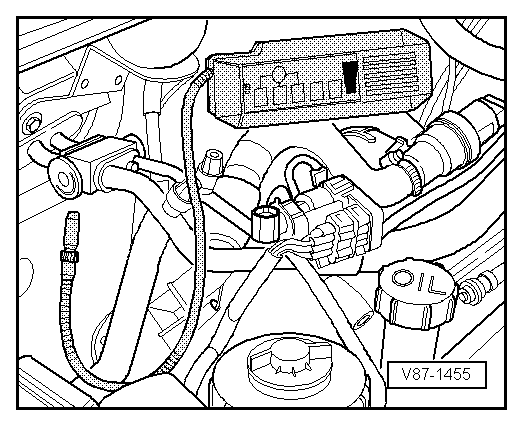| Tracing refrigerant circuit leaks with electronic leak detector (e.g. V.A.G 1796) |
| Vehicles with high-voltage system (hybrid vehicles) |

Note | t
| The various refrigerants have a different molecular structure. The sensors of the electronic leak detectors are matched to these molecules. If use is made of an electronic leak detector not specially designed for refrigerant R134a, this will not respond to refrigerant R134a or only in the event of a high refrigerant concentration in the vicinity of the leak. |
| t
| Depending on the design of the air conditioning unit it may be possible to determine a leak at the evaporator by inserting the test prod of the leak detector through the connection for glove compartment cooling into the air conditioning unit or - with the condensation drain hose detached - by holding the test prod at the open connection for the condensation drain of the air conditioning unit. |
| Leak detection procedure for a refrigerant circuit completely empty as a result of leakage: |

Caution | Proceed as follows with a completely empty refrigerant circuit to avoid allowing more refrigerant than is absolutely necessary for leak detection to escape into the environment: |
|
| –
| Evacuate the refrigerant circuit using the air conditioner service station → Chapter. |

Note | t
| If evacuation already reveals a major leak, this is to be located and eliminated as described → Chapter. |
| t
| Continue as follows if evacuation does not reveal any leakage or if the leakage is so slight that it is not possible to determine the leakage location with the vacuum test. |
| –
| Pour roughly 100 g of refrigerant into the evacuated refrigerant circuit and perform leak detection as for a refrigerant circuit charged with refrigerant → Anchor. |
| Leak detection procedure for refrigerant circuit charged with refrigerant: |
| –
| Start up the leak detector in line with the operating instructions. |
|
|
|
 Note
Note Note
Note Note
Note
 Note
Note Note
Note Note
Note